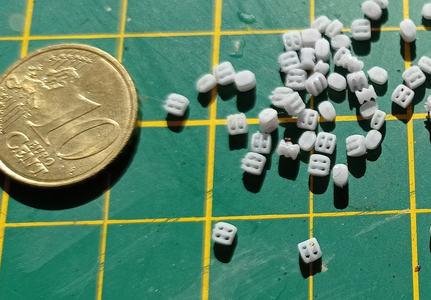- Joined
- Dec 14, 2021
- Messages
- 345
- Points
- 238

Edge of a rabbit hole? Absolutely. Filament is a good way to dip a toe in the water. A few tips for if and when you’re getting frustrated;
A filament heater makes all the difference. Sunlu make a decent cheap one and a couple that are more expensive.
A glass plate and 3DLAC are the next two game changers
Automatic plate levelling is worth the cost.
Have fun!
A filament heater makes all the difference. Sunlu make a decent cheap one and a couple that are more expensive.
A glass plate and 3DLAC are the next two game changers
Automatic plate levelling is worth the cost.
Have fun!





